There are over 220 living owl species around the world, but only 15 of them are found in Washington state. Read on to find out which owls live in the Evergreen State, and when and where you are most likely to spot them.
1. Barn Owl (Tyto alba)

The barn owl is a large, dark-eyed species with both long legs and a heart-shaped face characteristic of the barn owl family (Tytonidae).
©Michael Shake/Shutterstock.com
These owls are common across the United States, including in Washington, where they are year-round residents across much of the state. They are common in agricultural lands and other open areas but are adaptable to a wide variety of other habitats.
2. Barred Owl (Strix varia)

The barred owl is a large, dark-eyed species named for the stripes on its chest.
©Jim Cumming/Shutterstock.com
These owls are year-round residents in small pockets across much of the state, although they are rare in the Columbian Plateau. They prefer old-growth forests but are adaptable to a variety of other wooded habitats.
3. Boreal Owl (Aegolius funereus)
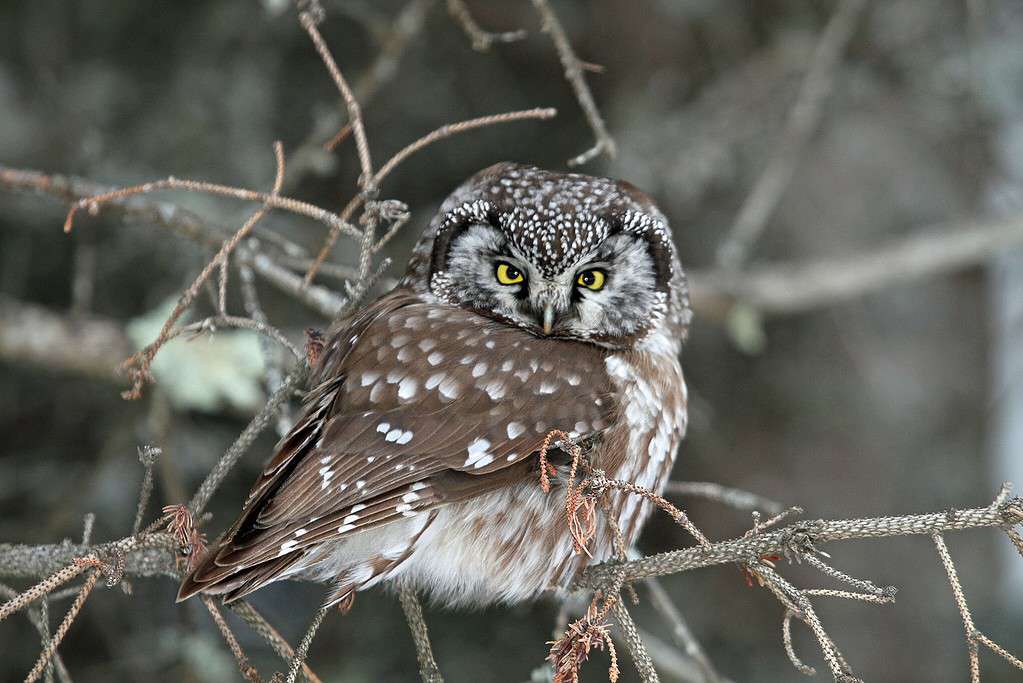
The boreal owl is a small, yellow-eyed species.
©Greg Schechter / CC BY 2.0 – License
These owls are uncommon year-round residents in the state’s eastern region. They prefer dense forests.
4. Burrowing Owl (Athene cunicularia)
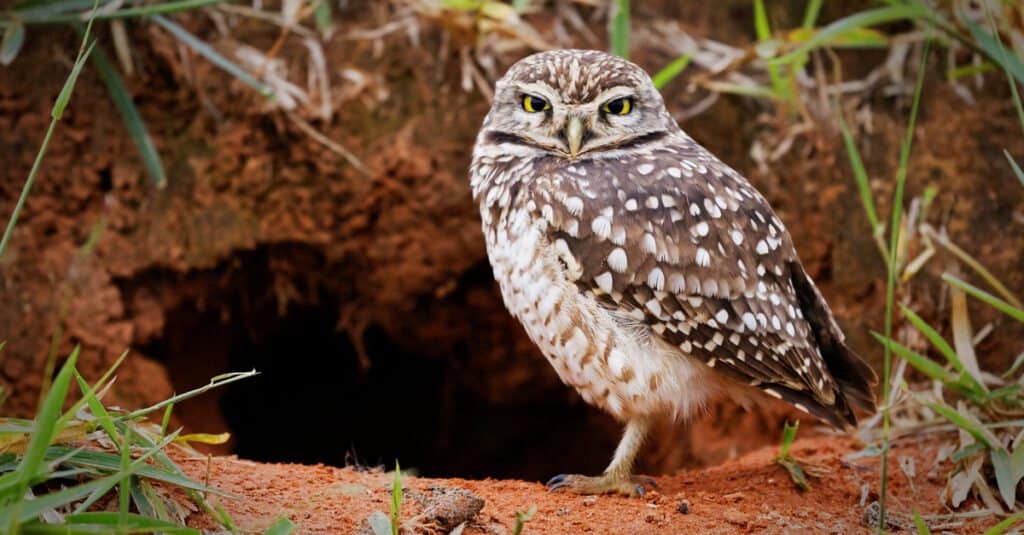
The burrowing owl is a small, yellow-eyed species that is unusual for being both a diurnal and colony-nesting owl.
©Mauricio S Ferreira/Shutterstock.com
These owls are a migratory species uncommonly found in the state’s southeastern region (primarily the Columbia Plateau) during the breeding season. They prefer open habitats where they can burrow underground. They prefer open terrain. Because of their declining numbers, Washington’s State Wildlife Action Plan (SWAP) currently lists the burrowing owl as a Species of Greatest Conservation Need (SGCN).
5. Flammulated Owl (Psiloscops flammeolus)
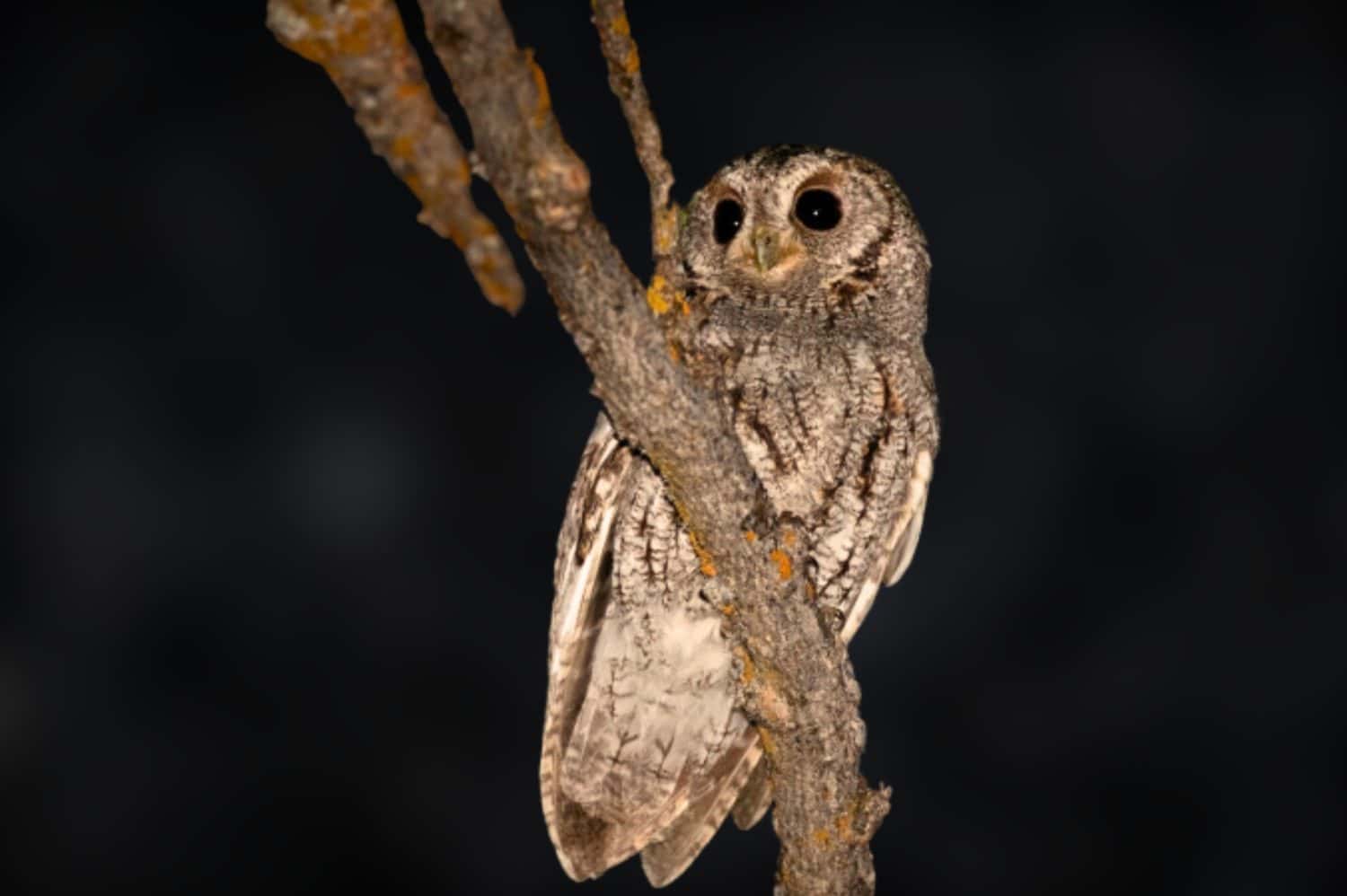
The flammulated owl is a small, dark-eyed species with both red and gray plumage phases.
©VisualVanguard/Shutterstock.com
These owls are a migratory species uncommonly found in the state’s eastern region (but only rarely in the Columbian Plateau) during the breeding season. They reside in mature montane conifer forests. They prefer open terrain. Because of their declining numbers, Washington’s State Wildlife Action Plan (SWAP) currently lists the flammulated owl as a Species of Greatest Conservation Need (SGCN).
6. Great Gray Owl (Strix nebulosa)

The great gray owl is a large, yellow-eyed species that is one of the largest owl species in North America.
©Lynn_Bystrom/iStock via Getty Images
These owls are uncommon residents in the northern part of the state, recorded primarily in eastern Okanogan and western Ferry Counties. They prefer mature conifer forests. They prefer open terrain. Because of their declining numbers, Washington’s State Wildlife Action Plan (SWAP) currently lists the great gray owl as a Species of Greatest Conservation Need (SGCN)
7. Great Horned Owl (Bubo virginianus)
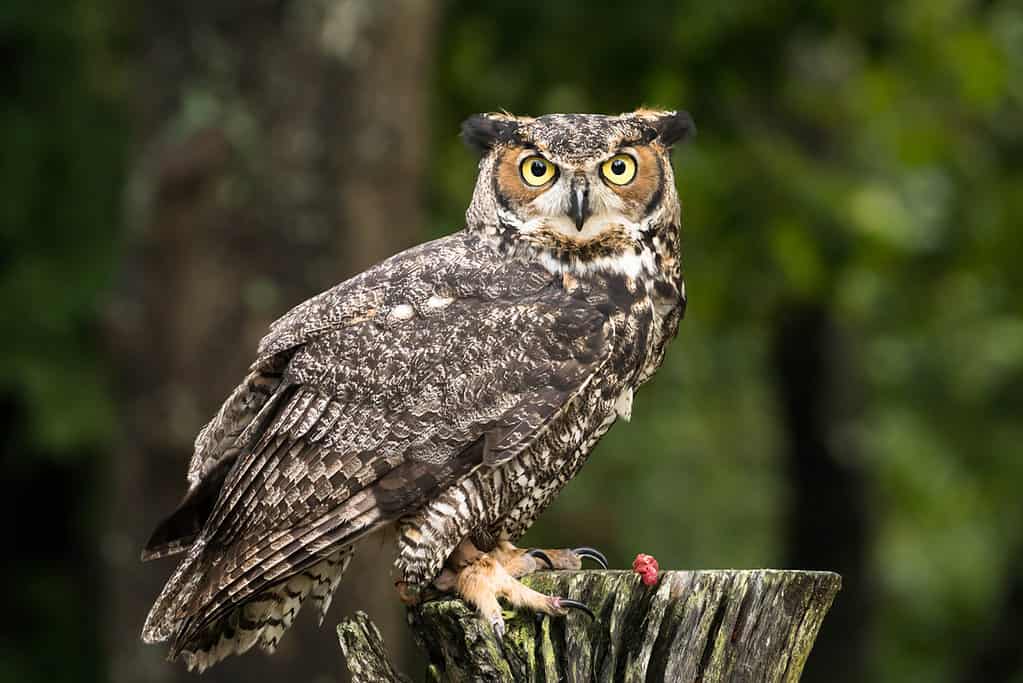
The great horned owl is a large, yellow-eyed species named for its ear tufts and is one of the largest owl species in North America.
©iStock.com/makasana
These owlsare among most common owls across North America, including Washington. They are year-round residents found across the state in a wide variety of habitats.
8. Long-Eared Owl (Asio otus)

The long-eared owl is a medium-sized, yellow-eyed species also named for its prominent ear tufts.
©Feng Yu/Shutterstock.com
These owls are uncommon year-round residents across the state’s eastern region and may also be rarely spotted in the winter in the western region. They prefer wooded habitats with access to open areas.
9. Northern Hawk Owl (Surnia ulula)
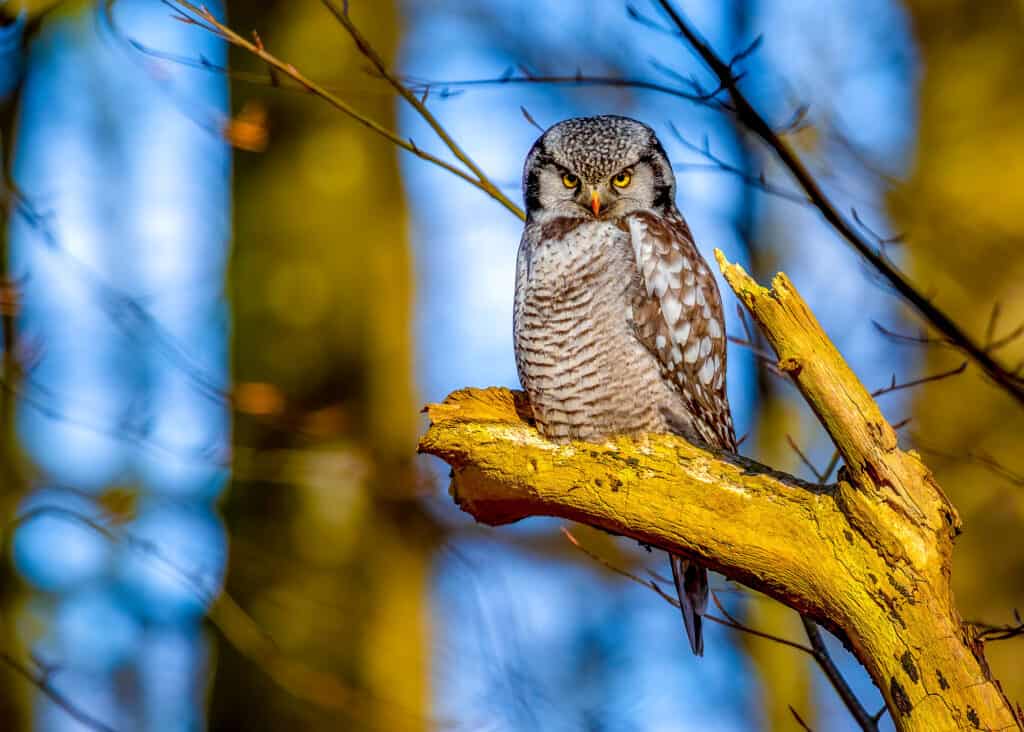
The northern hawk owl is a medium-sized, yellow-eyed species that is active during the day.
©Svitlana Tkach/Shutterstock.com
These owls generally reside further north but are occasional winter visitors across the state.
10. Northern Pygmy-Owl (Glaucidium gnoma)

The northern pygmy-owl is a small, yellow-eyed species that is active during the day.
©Jordan Feeg/Shutterstock.com
These owls are year-round residents across much of the state but are most common in the East Cascades and rarest in the Columbian Plateau. They prefer forested areas near water.
11. Northern Saw-Whet Owl (Aegolius acadicus)
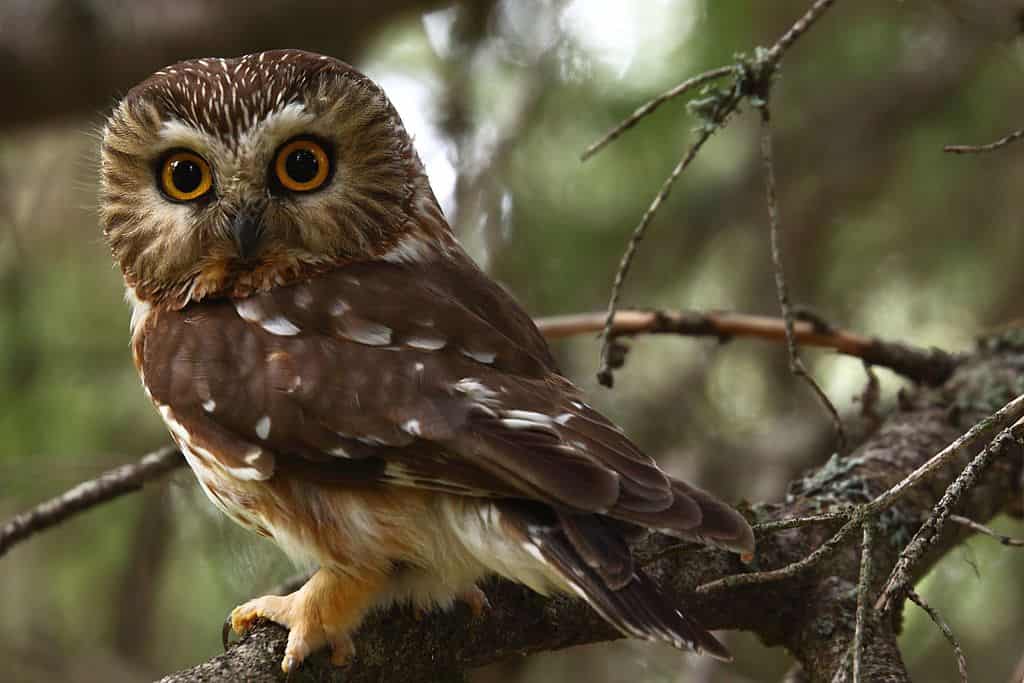
The northern saw-whet owl is a small, yellow-eyed species.
©Kameron Perensovich, CC BY-SA 2.0, via Wikimedia Commons – License
These owls are year-round residents across much of the state, although they are rare in the Columbia Plateau. They prefer dense forests near water.
12. Short-Eared Owl (Asio flammeus)
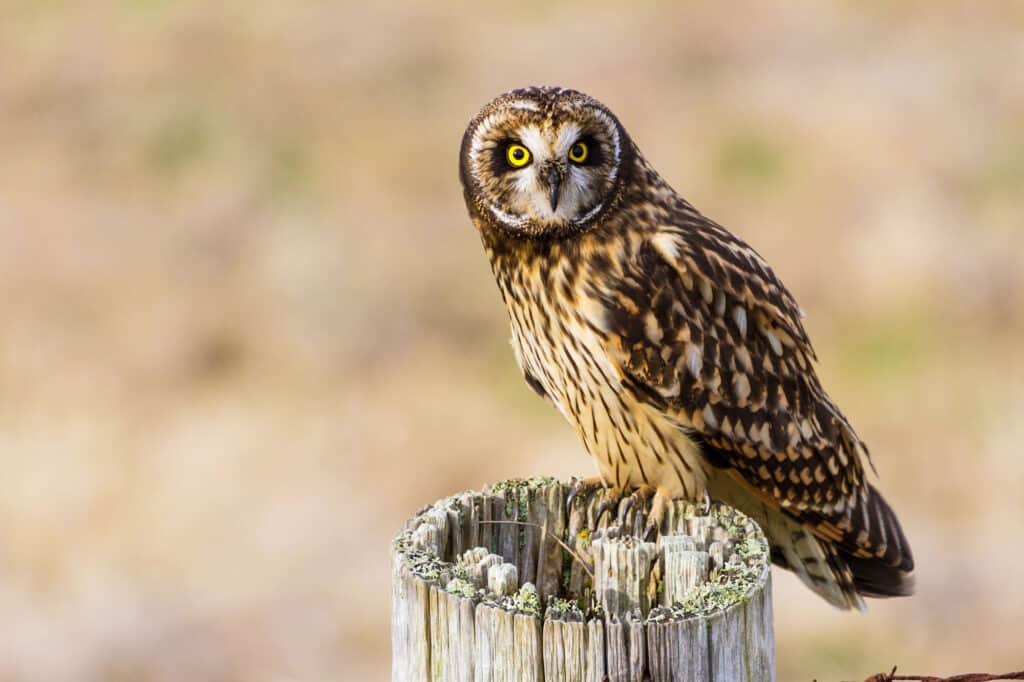
The short-eared owl is a medium-sized, yellow-eyed species that is active during the day.
©iStock.com/Devonyu
These owls are uncommon year-round residents of the state but have disappeared from much of their former range in the western region. They prefer open terrain. Because of their declining numbers, Washington’s State Wildlife Action Plan (SWAP) currently lists the short-eared owl as a Species of Greatest Conservation Need (SGCN).
13. Snowy Owl (Bubo scandiacus)

The snowy owl is a large, yellow-eyed species that is also the only primarily white owl.
©Carol Gray/iStock via Getty Images
These owls breed in the Arctic tundra but sometimes appear in Washington state as part of irruptive migrations during the winter.
14. Spotted Owl (Strix occidentalis)

The spotted owl is a medium-sized, dark-eyed species.
©C.M.Corcoran/Shutterstock.com
These owls are rare year-round residents across the state’s western region. They prefer old-growth coniferous forests; as logging has led to the loss and fragmentation of this habitat, spotted owl populations have plummeted. Because of their declining numbers, Washington’s State Wildlife Action Plan (SWAP) currently lists the subspecies present in the state, the northern spotted owl (Strix occidentalis caurina), as a Species of Greatest Conservation Need (SGCN). The federal government also lists it as Threatened under the Endangered Species Act.
15. Western Screech Owl (Megascops kennicottii)

The western screech owl is a small, yellow-eyed species with both brown and gray regional plumage morphs.
©Steve Bruckmann/Shutterstock.com
These owls are year-round residents across much of the state, although they are rare in the Columbia Plateau. They prefer forests but can be found in a variety of other habitats with at least some trees for nesting. Because of their declining numbers, Washington’s State Wildlife Action Plan (SWAP) currently lists the western screech owl as a Species of Greatest Conservation Need (SGCN).
Summary of 15 Owls that Live in Washington State (and Where You’re Likely to See Them)
| Owl Species | When and Where Found in Washington State |
|---|---|
| 1. Barn owl (Tyto alba) | year-round, common statewide |
| 2. Barred Owl (Strix varia) | year-round, most of state (rare in Columbia Plateau) |
| 3. Boreal owl (Aegolius funereus) | year-round, eastern region |
| 4. Burrowing Owl (Athene cunicularia) | breeding season only, southeast region (primarily Columbia Plateau) |
| 5. Flammulated Owl (Psiloscops flammeolus) | breeding season only, eastern region (rare in Columbia Plateau) |
| 6. Great Gray Owl (Strix nebulosa) | year-round, northern region (primarily in eastern Okanogan and western Ferry Counties) |
| 7. Great Horned Owl (Bubo virginianus) | year-round, common statewide |
| 8. Long-Eared Owl (Asio otus) | year-round, uncommon in eastern region; winter only, rare in western region |
| 9. Northern Hawk Owl (Surnia ulula) | winter, uncommon visitor statewide |
| 10. Northern Pygmy-Owl (Glaucidium gnoma) | year-round, most of state (rare in Columbia Plateau) |
| 11. Northern Saw-Whet Owl (Aegolius acadicus) | year-round, most of state (rare in Columbia Plateau) |
| 12. Short-Eared Owl (Asio flammeus) | year-round, uncommon in east & rare in west |
| 13. Snowy Owl (Bubo scandiacus) | some winters during irruptive migrations, statewide |
| 14. Spotted Owl (Strix occidentalis) | year-round, western region (RARE) |
| 15. Western Screech-Owl (Megascops kennicottii) | year-round, most of state (rare in Columbia Plateau) |
The photo featured at the top of this post is © Imran Ashraf/Shutterstock.com
Thank you for reading! Have some feedback for us? Contact the AZ Animals editorial team.






